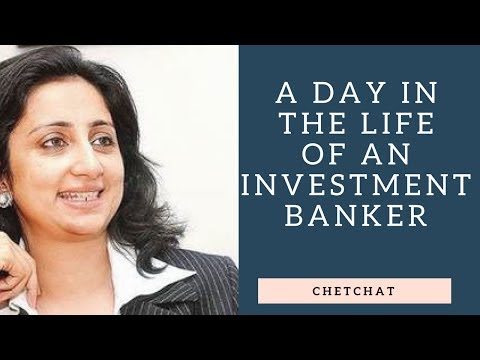Contents
The Dragonfly Doji indicates that lower prices have been rejected, and the market has since surged upwards, closing near the opening price. The fact that the candle is near trendline support and that prices have previously bounced off this major trendline adds to this potential bullish bias. The neutral Doji consists of a candlestick with an almost invisible body located in the middle of the candlestick, with the upper and lower wicks of similar lengths.

Consider a market situation when buying trends are strong, but some traders also anticipate the ongoing trend to reverse; hence they sell. But when it is not strong enough, the market can reflect indecision. Traders keep a lookout for such moments to predict when market trends might switch.
Doji Dragonfly Candlestick: What It Is, What It Means, Examples
Would you take this as an opportunity to start a discussion or a chat fight may be. The Doji candlestick is one of the tools used widely for Technical Analysis. Why it is made and how the trade is estimated from this, we will know all this, just request you to read this post completely. CREW Coins are a mintable ERC-721 token which holders of all 1-9 ranked DOJI or X CREWs can mint. This token provides access to exclusive perks, limited edition traits, and other benefits for holders.
- Estimating the potential value of a Doji-informed trade might be difficult because candlestick patterns rarely indicate price targets.
- A very extended lower wick on this Doji at the bottom of a bearish move is a very bullish signal.
- If the real body of the candlestick is around 5 percent of its total size, it is called Doji; otherwise, a Spinning Top.
- We also reference original research from other reputable publishers where appropriate.
- However, like other tools, candlestick charts alone aren’t indicative of any change.
- The Structured Query Language comprises several different data types that allow it to store different types of information…
The candle is formed by a long lower shadow coupled with a small real body. A Dragonfly paid in capital is a type of candlestick pattern that can signal a potential reversal in price to the downside or upside, depending on past price action. It’s formed when the asset’s high, open, and close prices are the same. Every candlestick pattern has four sets of data that help to define its shape. Based on this shape, analysts are able to make assumptions about price behavior. The filled or hollow bar created by the candlestick pattern is called the body.
Doji Candlestick Trading: Main Talking Points
Typically the graveyard Doji candle appears at the top of the uptrend. It is very close to a plus sign and has open and close very close to each other. Moreover, the upper body and the lower body are also of the same size. You should consider whether you can afford to take the high risk of losing your money. At the opening bell, bears took a hold of GE, but by mid-morning, bulls entered into GE’s stock, pushing GE into positive territory for the day.

The isolated Doji candlestick pattern is neutral and not a confirmation of possible trend reversal. The size, pattern, and location where the Doji formed can reveal more about changing sentiment. Some traders also find the Double Doji pattern a more convincing indication of a trend change. A typical approach to forecasting trends and building a trading strategy is to examine candlestick patterns in the prices of stocks traded.
When studied along with a variety of other data, there are a lot of different candlestick patterns that signal multiple possible market directions. A https://1investing.in/ candle chart occurs when the opening and closing prices for a security are just about identical. If this price is close to the low it is known as a «gravestone,» close to the high a «dragonfly», and toward the middle a «long-legged» doji.
What is Freezing? Can I Unfreeze an DOJI/X?
When detected at the back end of uptrends or downtrends, many varieties of Doji can be excellent indications of a trend reversal. They may not be as strong a signal when they appear at the start of a trend. It’s also worth noting that if the previous trend continues after a doji, it might behave as a phoney reversal pattern, encouraging you to keep a trade open. When trading with Doji patterns, it’s also vital to examine the current market circumstances and other elements for analysis.
The opening and closing values are the same, with different high and low. A long-legged Doji, with long upper and lower shadows, is called a “Rickshaw Man”. So traders have to combine the support and resistance as well as other indicators to confirm the probability of a trend reversal indication from the formation of Doji.
Each CREW has their own sets of traits, which can not be worn by the other CREW. Aesthetic rarity is able to be refined and upgraded through customization packs. As you swap out and change your traits, you will dynamically update the rarity of your DOJI/X. With Ranks these are static, all of the Rank 1 DOJI/Xs will remain Rank 1, and all the Rank 9’s will remain Rank 9. Zingot is claimable through the Market to purchase art, and very soon traits, accessories, and companions for your CREW.
On the other hand, its occurrence in a downtrend hints at a potential upside retracement. Bearish Long-legged Doji illustrationIf the closing price is right in the middle, it could be considered a trend continuation pattern. In this case, one can always refer to previous candles to predict future trends. The long-legged Doji has longer wicks, suggesting that buyers and sellers have tried to take control of the price action aggressively at some point during the candle’s timeframe.
But a Doji with other candles from the chart can confirm a change in trend. A Doji candlestick chart pattern is formed due to indecision in the market where neither the bulls nor bears can push prices. Doji candlestick can help traders, and even investors, to a large extent, can help identify trend reversal points on chart patterns. A bearish abandoned baby is a type of candlestick pattern identified by traders to signal a reversal in the current uptrend. A spinning top is a candlestick pattern with a short real body that’s vertically centered between long upper and lower shadows.
Limitations of Using the Dragonfly Doji
A Doji does not occur frequently and is therefore not reliable or a trustworthy indicator on its own. It must be used with other chart pattern analysis techniques in order for a trader to make an informed decision. The size of the doji’s tail or wick coupled with the size of the confirmation candle can sometimes mean the entry point for a trade is a long way from the stop-loss location. Doji and spinning top candles are commonly seen as part of larger patterns, such as the star formations by technical analysts.
There are usually slight discrepancies between these three prices. The example below shows a dragonfly doji that occurred during a sideways correction within a longer-term uptrend. The dragonfly doji moves below the recent lows but then is quickly swept higher by the buyers. The signal is confirmed if the candle following the dragonfly rises, closing above the close of the dragonfly. The stronger the rally on the day following the bullish dragonfly, the more reliable the reversal is.
Depending on market conditions, several types of Doji patterns may appear during consolidation periods, before price reversals, or during continuation trends. Notably, the Doji is a bearish signal if the closing price is below the middle of the candle, especially if it is close to resistance levels. Conversely, if the closing price is above the middle of the candle, it is bullish, as the formation resembles a bullish pin bar pattern. A popular Doji candlestick trading strategy involves looking for Dojis to appear near levels of support or resistance. The below chart highlights the Dragonfly Doji appearing near trendline support. In this scenario, the Doji doesn’t appear at the top of the uptrend as alluded to previously but traders can still trade based on what the candlestick reveals about the market.
What does a Doji candle tell traders?
If you see many Four-Price Dojis on the chart – stay out of this market. It’s common to see the Four-Price Doji in markets where trading volume and liquidity is extremely low. If the price has tested the highs/lows (of the Long-Legged Doji) multiple times, then it’s likely to break out. You know Resistance is an area where possible selling pressure could come in. Once it “rested” enough, the market is likely to move higher since that’s the path of least resistance. Any Grievances related the aforesaid brokerage scheme will not be entertained on exchange platform.
What is a Doji?
So, for example, when Bitcoin opens and closes at $20,000 on a particular day even if its price seesawed between $25,000 and $15,000 throughout the given24-hour period. Freezing is a way in order to lock in the State of your DOJI/X CREW permanently. Meaning if you have the traits you want your DOJI/X CREW member to have forever in place you can freeze it and it will never change. In order to get a Frozen Coin you will need a set of 9 DOJI/Xs ranked 1 through 9 which are all unrevealed, and also frozen. Forever removing those traits from the trait pool, and unlocking incredibly special perks for the holder of those DOJI Tokens. More information about Quantum States and Freezing can be found here.
The best application of Doji candlestick is on the daily charts. A Doji is common, and so it often isn’t very reliable to spot a trend reversal on its own. So one can opt to trade with a bullish view on the stock on the following day. The stock opens at ₹100 and continues the downtrend to make a low of ₹95 intraday.




